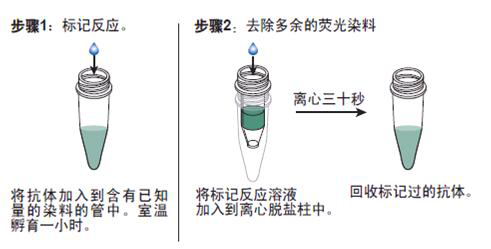
|

| 产地 | 进口、国产 |
| 品牌 | 上海莼试 |
| 保存条件 | Store at -20 °C |
| 货号 | CS11223 |
| 应用范围 | WB=1:100-500 ELISA=1:500-1000 IHC-P=1:100-500 IHC-F=1:100-500 IF=1:50-200 |
| CAS编号 | |
| 抗体名 | Anti-RNF11 |
| 克隆性 | |
| 靶点 | 详见说明书 |
| 适应物种 | 详见说明书 |
| 形态 | 详见说明书 |
| 宿主 | 详见说明书 |
| 亚型 | IgG |
| 标识物 | 详见说明书 |
| 浓度 | 1mg/1ml% |
| 免疫原 | KLH conjugated synthetic peptide derived from human RNF11 |
产品订购信息:
英文名称 Anti-RNF11
中文名称 环指蛋白11抗体品牌
别 名 CGI 123; RING finger protein 11; RNF11; RNF11_HUMAN; Sid 1669; SID1669.


浓 度 1mg/1ml
规 格 0.2ml/200μg
抗体来源 Rabbit
克隆类型 polyclonal
交叉反应 Human, Mouse, Rat, Chicken, Dog, Cow, Horse, Rabbit, Sheep
产品类型 一抗
研究领域 细胞生物 免疫学 表观遗传学
蛋白分子量 predicted molecular weight: 11kDa
性 状 Lyophilized or Liquid
免 疫 原 KLH conjugated synthetic peptide derived from human RNF11
亚 型 IgG
纯化方法 affinity purified by Protein A
储 存 液 Preservative: 15mM Sodium Azide, Constituents: 1% BSA, 0.01M PBS, pH 7.4
环指蛋白11抗体品牌 产品应用 WB=1:100-500 ELISA=1:500-1000 IHC-P=1:100-500 IHC-F=1:100-500 IF=1:50-200
(石蜡切片需做抗原修复)
not yet tested in other applications.
optimal dilutions/concentrations should be determined by the end user.
保存条件 Store at -20 °C for one year. Avoid repeated freeze/thaw cycles. The lyophilized antibody is stable at room temperature for at least one month and for greater than a year when kept at -20°C. When reconstituted in sterile pH 7.4 0.01M PBS or diluent of antibody the antibody is stable for at least two weeks at 2-4 °C.
Important Note This product as supplied is intended for research use only, not for use in human, therapeutic or diagnostic applications.
产品介绍
Function : Essential component of a ubiquitin-editing protein complex, comprising also TNFAIP3, ITCH and TAX1BP1, that ensures the transient nature of inflammatory signaling pathways. Promotes the association of TNFAIP3 to RIPK1 after TNF stimulation. TNFAIP3 deubiquitinates 'Lys-63' polyubiquitin chains on RIPK1 and catalyzes the formation of 'Lys-48'-polyubiquitin chains. This leads to RIPK1 proteasomal degradation and consequently termination of the TNF- or LPS-mediated activation of NF-kappa-B. Recruits STAMBP to the E3 ubiquitin-ligase SMURF2 for ubiquitination, leading to its degradation by the 26S proteasome.
Subunit : Interacts (when phosphorylated) with 14-3-3. Interacts with the E3 ubiquitin-ligases NEDD4, ITCH, SMURF2 and WWP1 (By similarity). Also interacts with the E2 ubiquitin-conjugating enzymes UBE2D1 and UBE2N, but neither with CDC34, nor with UBE2L3. Interacts with ZNF350, EPS15 and STAMBP. After TNF stimulation, interacts with TAX1BP1, TNFAIP3 and RIPK1; these interaction are transient and they are lost after 1 hour of stimulation with TNF (By similarity). Interacts with GGA1.
Subcellular Location : Cytoplasm. Nucleus. Predominantly cytoplasmic, when unphosphorylated, and nuclear, when phosphorylated by PKB/AKT1.
Tissue Specificity : Expressed at low levels in the lung, liver, kidney, pancreas, spleen, prostate, thymus, ovary, small intestine, colon, and peripheral blood lymphocytes, and, at intermediate levels, in the testis, heart, brain and placenta. Highest expression in the skeletal muscle. In the brain, expressed at different levels in several regions: high levels in the amygdala, moderate in the hippocampus and thalamus, low in the caudate and extremely low levels in the corpus callosum (at protein level). Restricted to neurons, enriched in somatodendritic compartments and excluded from white matter (at protein level). In substantia nigra, present in cell bodies and processes of dopaminergic and nondopaminergic cells (at protein level). In Parkinson disease, sequestered in Lewy bodies and neurites. Overexpressed in breast cancer cells, but not detected in the surrounding stroma and weakly, if at all, in normal breast epithelial cells (at protein level). Also expressed in several tumor cell lines.
Post-translational modifications : Ubiquitinated in the presence of ITCH, or SMURF2, and UBE2D1, as well as WWP1.
Phosphorylation by PKB/AKT1 may accelerate degradation by the proteasome.
May be acylated at Cys-4, possibly palmitoylated. Acylation at both Gly-2 and Cys-4 is required for proper localization to the endosomes.
Similarity : Contains 1 RING-type zinc finger.
Database links : UniProtKB/Swiss-Prot: Q9Y3C5.1

NF-κBp50(p50 NF-kappa B;p50NFKB) 细胞核因子50/κ基因结合核因子50抗原Multi-class antibodies规格: 0.5mg
Anti-APOH 载脂蛋白H抗体Multi-class antibodies规格: 0.2ml
Rhesus antibody Rh phospho-ATXN1(Ser775) 磷酸化失调症蛋白1抗体 规格 0.1ml
品名 规格 备注
Vesicle docking protein p115 英文名称: 囊泡对接蛋白p115抗体 0.2ml
DAZL 英文名称: 细胞发育相关蛋白DAZL抗体 0.2ml
Anti-APOH 载脂蛋白H抗体Multi-class antibodies规格: 0.2ml
Anti-PIM1/FITC 荧光素标记前病毒整合位点蛋白1抗体IgGMulti-class antibodies规格: 0.2ml
Rabbit Anti-human Gamma-chain 兔抗人γ-链 (亲和层析纯化)Multi-class antibodies规格: 0.2mg
代谢型谷氨酸受体2 Anti-GRM2 0.2ml
Dog IgM/APC APC标记的兔抗犬IgM抗体 0.1ml
FAM155A 英文名称: FAM155A蛋白抗体 0.2ml
Rhesus antibody Rh Phospho-SEK1/MKK4 (Ser257) 磷酸化原活化蛋白激酶激酶4抗体 规格 0.1ml
Rabbit Anti-human Gamma-chain 兔抗人γ-链 (亲和层析纯化)Multi-class antibodies规格: 0.2mg
Phospho-MEK4 (Thr261) 英文名称: 磷酸化原活化蛋白激酶激酶4抗体 0.1ml
EDG6 英文名称: 内皮细胞的分化蛋白6抗体 0.1ml
T淋巴细胞负调节蛋白之一抗体 Anti-VSIG4 Antibody 0.2ml
Anti-TSHR/FITC 荧光素标记促甲状腺素受体抗体IgGMulti-class antibodies规格: 0.2ml
Rhesus antibody Rh phospho-IKK beta(Tyr199) 磷酸化KB抑制蛋白激酶β抗体 规格 0.1ml
Caspase-12(hunman) 半胱胺酸蛋白酶蛋白-12抗原(人)Multi-class antibodies规格: 0.5mg
HUM, 正常人主动脉平滑肌细胞
GES-1 人胃粘膜细胞
SELE Others Rat 大鼠 E-selectin / ELAM-1 / CD62E 人细胞裂解液 (阳性对照)
CM-M038小鼠肝内胆管上皮细胞完全培养基100mL
上皮细胞培养基PEpiCM
EB病毒转化的人B淋巴细胞;KMY0910 真皮成纤维细胞完全培养基 100mL
CL-0063CNE(人细胞)5×106cells/瓶×2
ST6GALNAC2 Others Mouse 小鼠 STHM / ST6GALNAC2 人细胞裂解液 (阳性对照)
小鼠小肠粘膜上皮细胞完全培养基 100mL
EC9706人细胞 Human esophageal cancer cell line EC9706. DMEM+10%FBS
IL6 Protein Human 重组人 IL6 / Ierleukin-6 蛋白
SF763(人细胞) 5×106cells/瓶×2 J82(细胞)
环指蛋白11抗体品牌 HUM, 正常人主动脉平滑肌细胞
GES-1 人胃粘膜细胞
SELE Others Rat 大鼠 E-selectin / ELAM-1 / CD62E 人细胞裂解液 (阳性对照)
CM-M038小鼠肝内胆管上皮细胞完全培养基100mL
上皮细胞培养基PEpiCM
EB病毒转化的人B淋巴细胞;KMY0910 真皮成纤维细胞完全培养基 100mL

抗体的生物素化标记实验要点:
1. 环指蛋白11抗体品牌 如在反应混合液中有叠氮钠或游离氨基存在,会抑制标记反应。因此,蛋白质在反应前要对 0.1mol/L碳酸氢钠缓冲液或0.5mol/L硼酸缓冲液充分透析;
2.所用的NHSB及待生物素化蛋白质之间的分子比按蛋白质表面的ε-氨基的密度会有所不同,选择不当则影响标记的效率,应先用几个不同的分子比来筛选最适条件;
3.用NHSB量过量也是不利的,抗原的结合位点可能因此被封闭,导致抗体失活;
4.由于抗体的氨基不易接近可能造成生物素化不足,此时可加入去污剂如 Triton x-100, Tween20等;
5.当游离ε-氨基(赖氨酸残基的氨基)存在于抗体的抗原结合位点时,或位于酶的催化位点时,生物素化会降低或损伤抗体蛋白的结合力或活性;
6.生物素还可能与不同的功能基团,如羰基、氨基、巯基、异咪唑基及苯酚基,也可与糖基共价结合;
7.交联反应后,应充分透析,否则,残余的生物素会对生物素化抗体与亲和素的结合产生竞争作用;
8.在细胞的荧光标记实验中,中和亲和素的本底低,但由于链霉亲和素含有少量正电荷,故对某些细胞可导致高本底。
抗体的鉴定:
1)环指蛋白11抗体品牌 抗体的效价鉴定:不管是用于诊断还是用于,制备抗体的目的都是要求较高效价。不同的抗原制备的抗体,要求的效价不一。鉴定效价的方法很多,包括有试管凝集反应,琼脂扩散试验,酶联免疫吸附试验等。常用的抗原所制备的抗体一般都有约成的鉴定效价的方法,以资比较。如制备抗抗体的效价,一般就采用琼脂扩散试验来鉴定。
2)抗体的特异性鉴定:抗体的特异性是指与相应抗原或近似抗原物质的识别能力。抗体的特异性高,它的识别能力就强。衡量特异性通常以交叉反应率来表示。交叉反应率可用竞争抑制试验测定。以不同浓度抗原和近似抗原分别做竞争抑制曲线,计算各自的结合率,求出各自在IC50时的浓度,并按公式计算交叉反应率。
如果所用抗原浓度IC50浓度为pg/管,而一些近似抗原物质的IC50浓度几乎是无穷大时,表示这一抗血清与其他抗原物质的交叉反应率近似为0,即该血清的特异性较好。
3)抗体亲和力:是指抗体和抗原结合的牢固程度。亲和力的高低是由抗原分子的大小,抗体分子的结合位点与抗原决定簇之间立体构型的合适度决定的。有助于维持抗原抗体复合物稳定的分子间力有氢键,疏水键,侧链相反电荷基因的库仑力,范德华力和空间斥力。亲和力常以亲和常数K表示,K的单位是L/mol。抗体亲和力的测定对抗体的筛选,确定抗体的用途,验证抗体的均一性等均有重要意义。